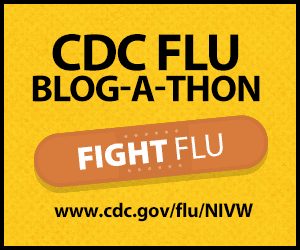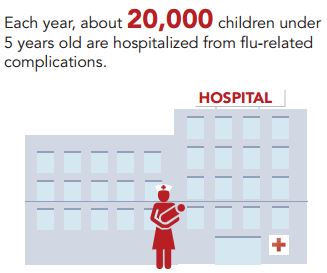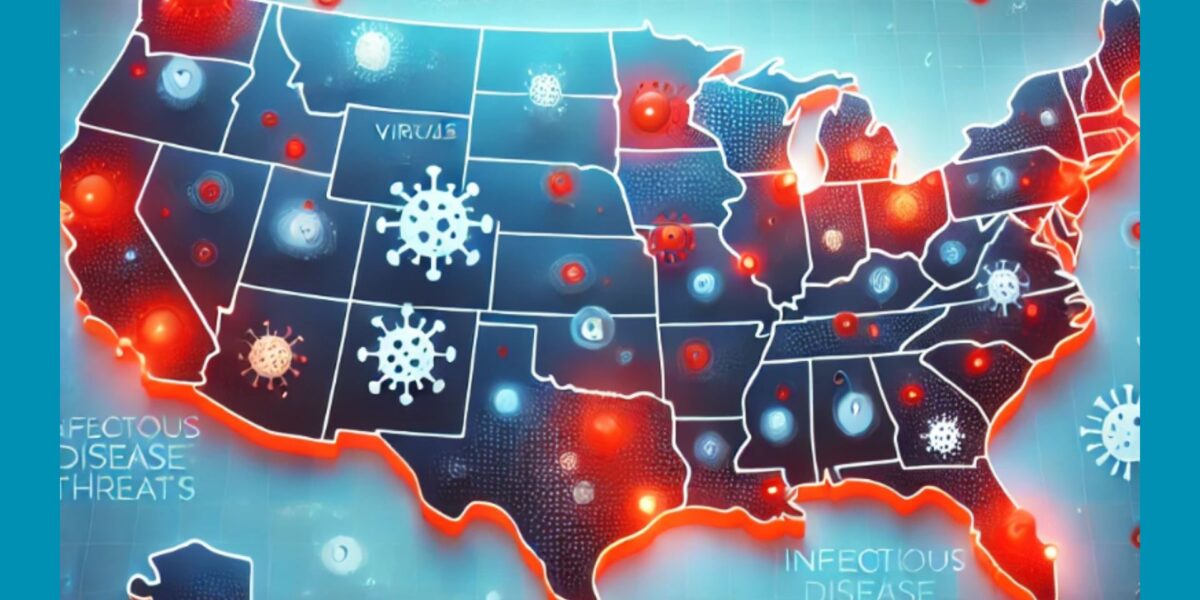
 To highlight the importance of annual flu prevention, NFID is sponsoring a blog relay during 2016 National Influenza Vaccination Week (NIVW), featuring guest posts authored by NFID leaders each day of the week.
To highlight the importance of annual flu prevention, NFID is sponsoring a blog relay during 2016 National Influenza Vaccination Week (NIVW), featuring guest posts authored by NFID leaders each day of the week.

Special thanks to Patricia (Patsy) A. Stinchfield, RN, MS, CPNP, CIC, NFID Secretary and Senior Director, Infection Prevention & Control and Pediatric Nurse Practitioner, Infectious Disease/Immunology at Children’s Minnesota, for this guest blog about the important role nurses can play in increasing influenza vaccination rates.
Nurses make up the largest segment of healthcare professionals in the US. With more than 3 million registered nurses nationwide, we have an unrivaled ability to reach patients, families, and fellow healthcare professionals with important health messages.
 I often hear patients (and even some of my colleagues) say “It’s just the flu.” To me, just is a word that should never be used to describe influenza (flu). Flu has a major impact in the US. Each year, ~20,000 children under 5 years of age are hospitalized from flu-related complications and in the 2014-15 season more that 3/4 of the nearly 1 million people hospitalized due to flu were adults age 65 years and older.
I often hear patients (and even some of my colleagues) say “It’s just the flu.” To me, just is a word that should never be used to describe influenza (flu). Flu has a major impact in the US. Each year, ~20,000 children under 5 years of age are hospitalized from flu-related complications and in the 2014-15 season more that 3/4 of the nearly 1 million people hospitalized due to flu were adults age 65 years and older.
The US national health policy, which I hope every nurse reading this knows, is to vaccinate everyone who is age six months or older against influenza each and every year!
So, what can nurses do? First, get vaccinated this year and every year. If you have not received your flu vaccine this season, go get it today. Nurses, like all healthcare professionals should Lead by Example. I’m proud of my nursing colleagues—9 in 10 nurses were vaccinated last year. Let’s aim to make that 100% this season!
Stay home if you’re sick. Self-isolation is essential once you’re symptomatic, but it’s not enough. Since adults can transmit influenza virus to others for at least one day before showing symptoms, immunization is very important. Think about those you encounter every day; moms who need to care for their families; immunocompromised patients, such as those going through chemotherapy; surgical patients who may be confined to their beds while we work and breathe around (and on) them; elderly patients with weaker immune systems; as well as others at high risk.
Nurses should take this responsibility very seriously. By getting vaccinated against influenza, we reduce the spread of flu within our facilities, between work and home, and throughout our community. Based on the sheer size of the nursing work force, as a group we can have a significant and positive impact on community immunity.
Educate yourself about influenza vaccines. There are many influenza vaccine options available today, including specialty high-dose and adjuvanted vaccines formulated for adults age 65 years and older, intradermal vaccines for the needle-phobic, and an egg-free option for individuals with severe egg allergies. Some vaccines include 3 influenza strains (two A strains and one B strain) and others contain 4 strains (two A and two B strains).
CDC recommends vaccination with whatever approved vaccine is available—patients should not delay vaccination if their first vaccine choice is not available. A vaccine deferred is too often a vaccine not received.
Hospitals are required to educate licensed independent practitioners and staff about the influenza vaccine; non-vaccine control and prevention measures; and the diagnosis, transmission, and impact of influenza. It is then our responsibility as healthcare professionals to share this knowledge with colleagues and patients.
Talk to your patients, your family, friends, co-workers, and members of your community about the importance of annual influenza vaccination. Normalize influenza vaccination and let everyone know about your commitment. At my facility, we have a visual cue on our name tags—this year they’re bright orange and they tell our colleagues and patients that we’ve been vaccinated against influenza.
When you talk to patients, make a strong recommendation and let them know that you were vaccinated as well: “I get vaccinated every year and I want you to have the same protection.” Tell patients that you make sure your family is vaccinated and you want their family to be vaccinated as well. If they think flu can’t or won’t impact them, share stories about families whose lives have been impacted by flu.
Be prepared to vaccinate at every visit. Recommend influenza vaccine to the next unvaccinated patient you see, no matter the reason for the visit. Make every visit a vaccine visit. If an unvaccinated patient comes in for a sprained thumb during flu season, he or she should walk out vaccinated.
And speaking of influenza vaccination season—the time is now, so what are you waiting for? Get vaccinating!
Be sure to check NFID News each day during #NIVW to view guest blog posts, including the upcoming post by H. Keipp B. Talbot, MD, MPH on countering common misconceptions about flu vaccination.
To join the conversation, follow NFID on Twitter (@nfidvaccines) using the hashtag #FightFlu and #NIVW, like us on Facebook, join the NFID Linkedin Group, and subscribe to NFID Updates.
Related Posts

News Round-Up: Infectious Disease Threats
According to NFID website poll, there are several worrisome infectious disease threats. Read recent news on topics of greatest concern, including avian influenza (bird flu), measles, and respiratory syncytial virus (RSV) …

Vaccines and Heart Health: A Vital Connection
Heart disease can increase the risk of serious or fatal complications from respiratory diseases including COVID-19, flu, and RSV

Harnessing the Power of Local Data
NFID dashboard aims to empower stakeholders with hyperlocal data to increase US adult respiratory vaccine uptake
